| 1 | Blackbelly garter snake |
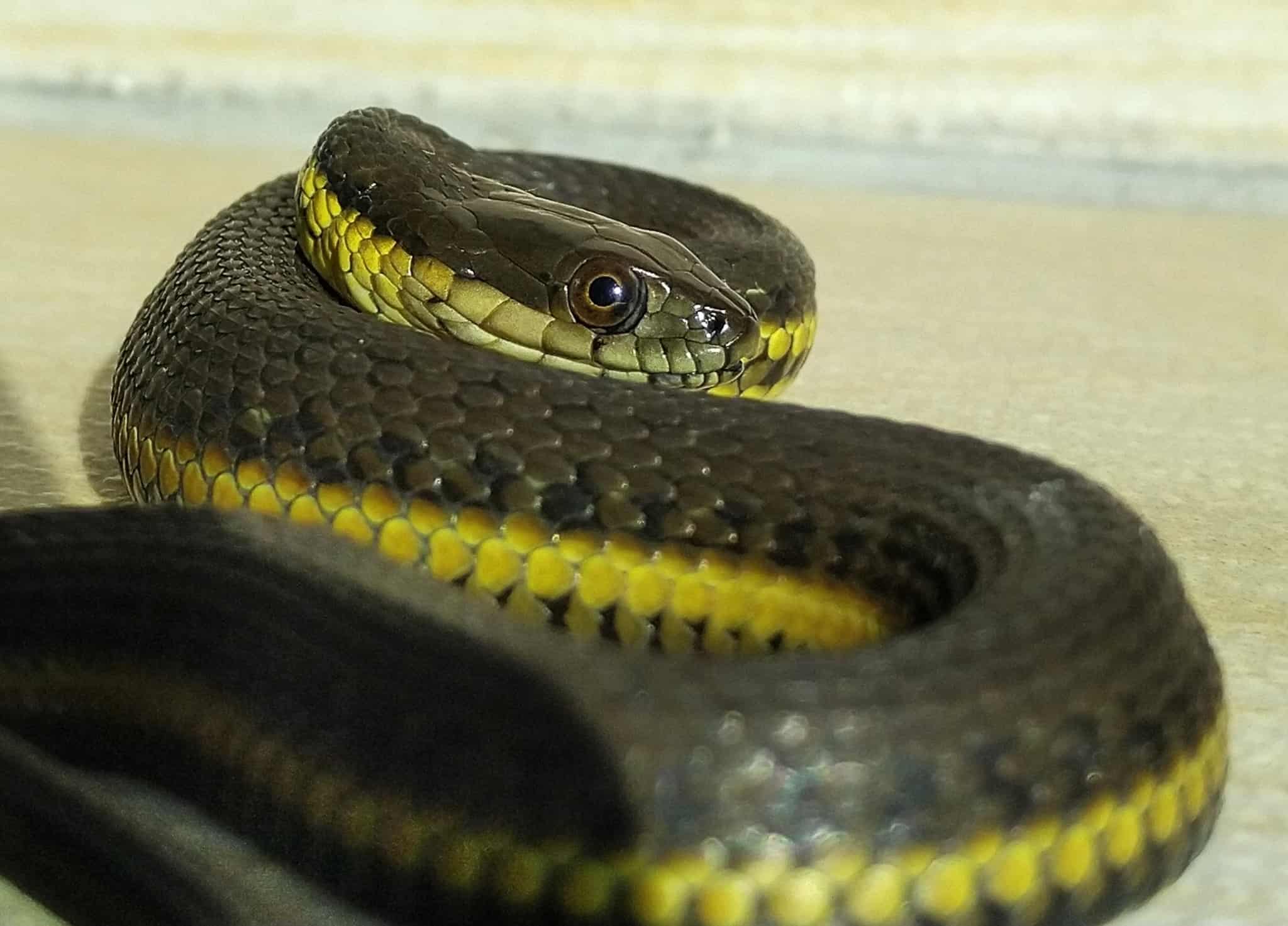
This garter snake is easily recognisable by its vivid black and yellow colours, sometimes fully black. Thamnophis melanogaster lives on the high altitude Mexican plateau, mostly above 2000 metres. It’s found near Mexico city, and is a water lover which spends its days in large lakes, small creeks and also manmade canals. There’s several large mountain lakes popular with tourists where Thamnophis melanogaster rears its head: Lake Cajititlan, Lake Chapala, and Lake Cuitzeo to name a few.
Blackbelly garter snakes can reach 2828 metres above sea level. This snake often lives in its lakes alongside another species, the Mexican garter snake (Thamnophis eques). Its average length is 50-60cm, occasionally reaching 70cm, and males and females are exactly equal in size.
Prey of this species includes earthworms, leopard frogs and crayfish. Blackbelly garter snakes also prey on leeches, and are skilful enough to distinguish between species. A study gave them scents and live animals of two leeches: the tiger leech, which is a scavenger, and the Mexican leech, which is a traditional blood sucker. The black belly garter snakes much preferred the former. They attacked both at first, but gradually gave up on the Mexican leech, while continuing to guzzle down tiger leeches ever more vociferously.
| 2 | Goldenhead garter snake |
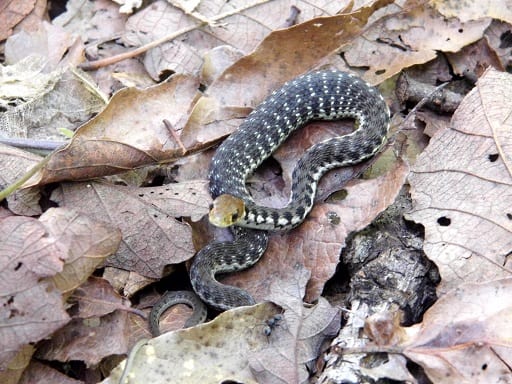
This is one of the most recognisable garter snakes of the family. First is the signature gold head, which isn’t a gimmick it uses to impress its mates, but a feature it is born with, that accelerates into adulthood. The second is that this is a rare garter snake to lack a bright vertebral stripe. Whether blotchy, plain or striped, garter snakes are consistent in having this spinal stripe, but Thamnophis chrysocephalus is a rare exception.
Goldenhead garter snakes are exclusive to southern Mexico, particularly near the city of Oaxaca. They particularly love pine oak forests, where they take shelter under fallen tree limbs. It’s believed that the collection of large branches for firewood is putting them under pressure. Luckily, this is a multiskilled snake; they can swim, climb, and thread their way along narrow branches to equal effect. They’re less aquatic than some garter snakes, but normally found near a water body.
Goldenhead garter snakes average at 50-60cm. Its Latin name of Thamnophis chrysocephalus makes perfect sense. “Chrysos” means golden in Greek, while “kephale” means head.
| 3 | Longtail alpine garter snake |
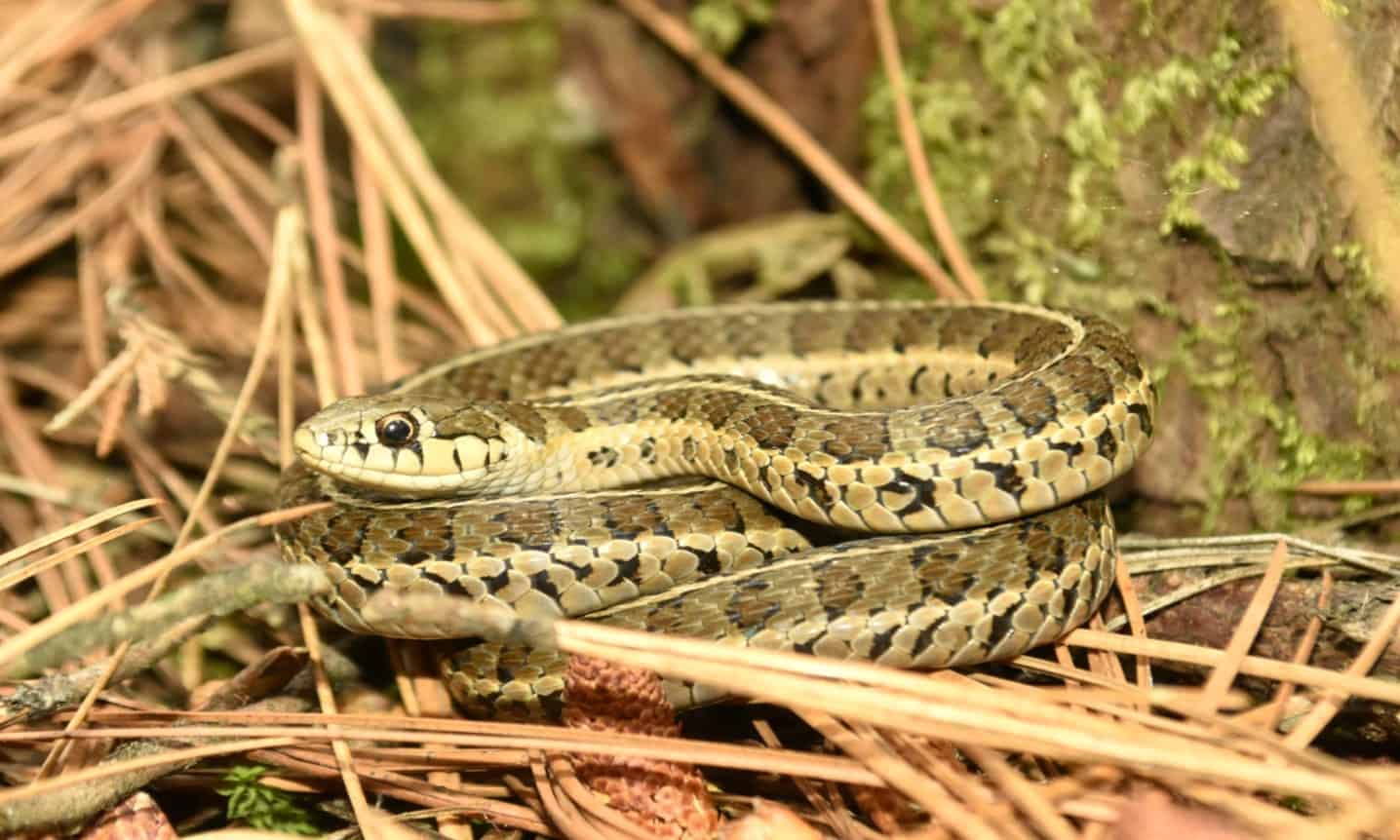
The long-tailed garter snake resides in the volcanic belt of south central Mexico, from the Jalisco to Veracruz regions. It’s a species of high altitudes, ranging from 2103-4273 metres above sea level. This is a smallish garter snake at 50-60cm. They’re found in similar regions to blackbelly garter snakes, but rarely coexisting with them directly.
The reason is that Thamnophis scalaris is less reliant on water than most garter snakes. They’re usually found close to permanent pools or streams, but tend to stay in the sweeping grassland, hills or pine oak forests next door. Consequently, they eat far fewer fish and amphibians. A study found that 81% of their diet was earthworms, while adults added eastern deermice and transvolcanic alligator lizards. They were also recorded eating a venomous snake: the dusky rattlesnake (Crotalus triseriatus), a staple of Mexico’s highlands. Likewise, the Mexican garter snake has been recorded as eating Thamnophis scalaris. It’s a never-ending battle for snake dominance in Mexico’s volcanic highlands.
Long-tailed alpine garter snakes hibernate in tiny holes in the ground in the middle of grassy hillsides. Scientists found one with a miniscule entrance, just 1-1.4cm. Six Thamnophis scalaris fled into this hole, while another two fled for open grassland, but were later seen wriggling their way in. Scientists used a probe and found this tiny hole to be longer than the length of the probe, which was one metre.
| 4 | Mexican wandering garter snake |
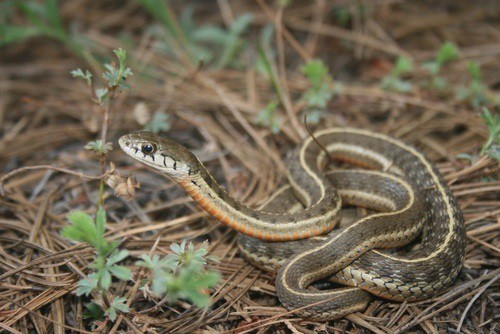
This Mexican species is still mysterious as of 2023. Nothing is known about its diet, nor of the predators that attempt to eat it.
Mexican wandering garter snakes are most commonly found in a single mountain range: the Sierra Madre Occidental. This runs continuously through northwest Mexico, and Thamnophis errans makes its home in its plentiful montane pine-oak forests. Mexican wandering garter snakes like areas close to streams, where they hang out near logs and occasionally under rock piles. Western Chihuahua state is one of their particular hotspots.
Mexican wandering garter snakes are contained entirely within Mexico. They were originally considered to be a terrestrial garter snake subspecies, but its scale counts differed and Thamnophis errans even has a differently coloured tongue. The two species are separated in northern Mexico by 280 kilometres of uninhabitable desert. It’s not surprising that they were confused, as this garter snake is very difficult to recognise, with the classic design of parallel yellow stripes, one down the spine and one on each flank. Their body colour is mainly a drab grey. Thamnophis errans reaches 75cm, and are commonly seen weaving through beds of twigs on the floors of forests.
| 5 | Yellow-throated garter snake |
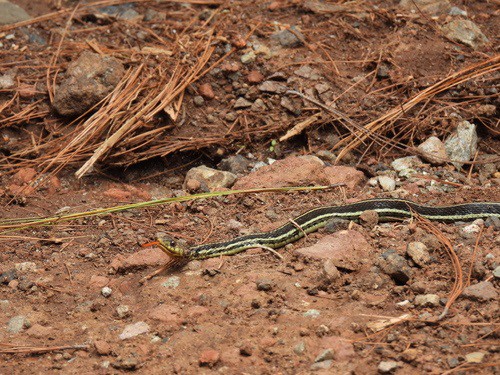
This species has a large territory in southern Mexico, ranging from the highlands near Mexico City to the outskirts of Durango. Its favourite habitat is moist grassland surrounded by patches of pine-oak forests. Yellow-throated garter snakes are a timid species, which has no desire to duel humans for bragging rights. They typically hide under stones, and will flee if the stone is flipped over. If their way is blocked, then they’ll coil into a circle and hide their head, protecting the brain, producing a foul snake smell and moving their tail in slow, steady movements. This is strangely similar to the grass snake of the UK.
Despite their yellow throat, another defensive skill is revealing bright blue skin between their scales, which is supposed to scare predators off. They achieve this by elongating their neck sideways.
Yellow-throated garter snakes like altitudes of 2000-2500 metres. Compared to US garter snakes, there’s little research on them. Yet they have a few confirmed prey, including amphibians like Bell’s salamanders and mountain tree frogs (Hyla eximia). Thamnophis pulchrilatus has yellow parallel stripes contrasting against black, and a juicy red tongue with a black tip.
| 6 | Highland garter snake |
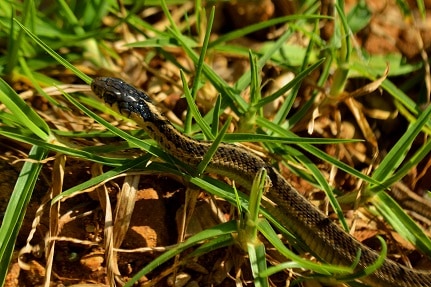
One of the most southerly garter snakes on Earth. Highland garter snakes live in extreme southern Mexico, Guatemala, northern El Salvador and western Honduras. They live well away from cities with their honking taxis and bright billboards. You’ll only find the highland garter snake in grassy plains and pine-oak forests above 1600 metres, with a maximum altitude confirmed so far of 3710 metres.
Thamnophis fulvus lives a shy, quiet life. They’re particularly attracted to juniper bushes and they can vanish into a pile of rocks in the blink of an eye. They also swim in manmade cattle ponds, as well as the usual rocky streams. This snake is hard to recognise, but one sign is that their vertebral stripe is relatively dull, compared to the neon colours of other garter snakes. They also have a stripe on each flank, while the dark scales between have subtle patterns like a rug. Then there’s a proper special feature: this is a rare garter snake to have a fully black tongue.
The Latin name is Thamnophis fulvus, and fulvus translates to “tawny, reddish yellow”. Highland garter snakes are one of nature’s mysteries, but we have a few morsels of knowledge from captivity. A breeder produced a litter of ten babies, and reported that his adults fed enthusiastically on rodents. Most sightings from the wild, meanwhile, have been amphibians. Highland garter snakes are confirmed to prey on the Zacate Blanco tree frog, montane sheep frogs, and the salamander Bolitoglossa rostrata. This garter snake reaches a maximum of 65cm.
| 7 | Mexican garter snake |
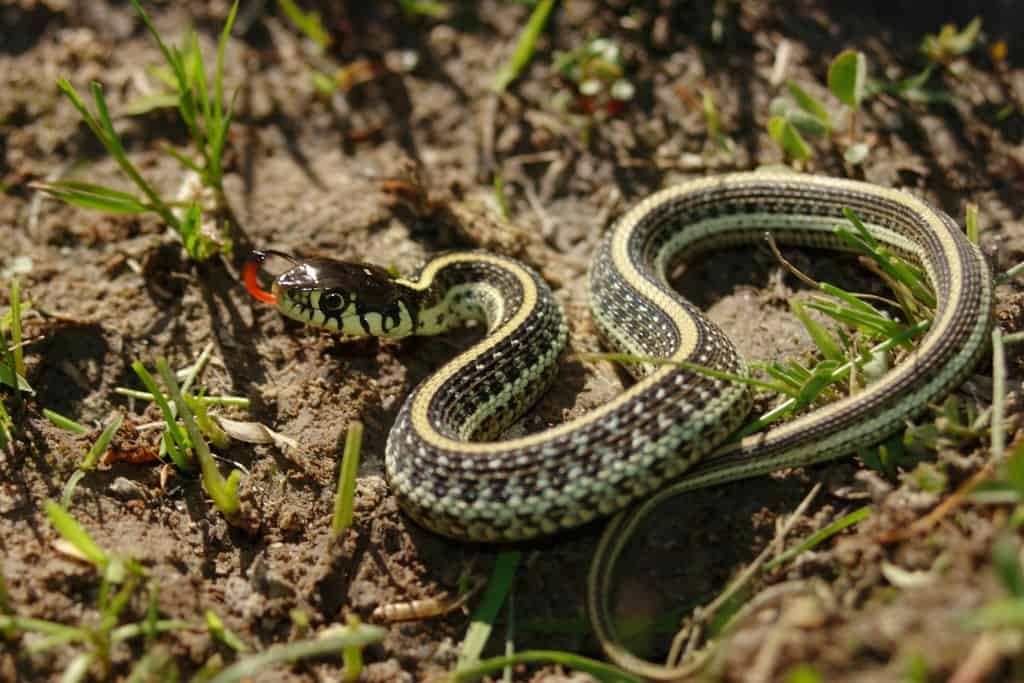
The Mexican garter snake (Thamnophis eques) is the most sprawling species in Mexico, covering a large territory and also spilling into Arizona. This snake is a particular water lover, spending its days swimming around lake shores and hoping to spot a hopping dot representing an amphibian.
Because of their aquatic ways, Mexican garter snakes have accumulated 10 different subspecies. Many of these subspecies live in just one lake basin, becoming stranded as water recedes, free to mutate in various directions. These vary wildly by appearance, making the Mexican garter snake very difficult to recognise. For example, the subspecies Thamnophis eques virgatenuis has vivid blue stripes instead of beige.
This is also one of the largest garter snakes. The record was once 121.6cm, before being smashed through with 130.7cm in 2012. The common garter snake maxes out at 134cm, while the giant garter snake (the world’s largest) has a record of 164.6cm.
Mexican garter snakes prey on amphibians, including the Liobates American waterfrog family. They also prey on fellow snakes, including a fellow member of this list: the long-tailed alpine garter snake.
| 8 | Rossman’s garter snake |
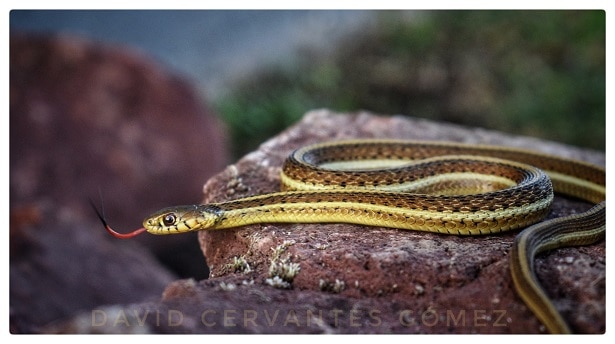
This garter snake is one of the rarest in Mexico. It’s found mainly in the small state of Nayarit, where it lives a quiet life in freshwater wetlands. They also appear in roadside ditches, springs, and seepage runs fed by regular thunderstorms. They appear along one small river: the San Cayetano river, but not in the river itself. Rossman’s garter snakes like to lurk in riffles, fast flowing streams over a rocky base, and ambush fish as they swim past.
There’s a happy story with this snake: a 2000 study mentioned that: “Thamnophis rossmani may be in grave danger, if not already extinct”. But photographs have turned up since then, including the one above. Rossman’s garter snake is most closely related to the Mexican garter snake (Thamnophis eques), but the dark spots on its flanks are significantly smaller.
This garter snake is medium length for its family. Females average at 57.0cm, while males average 57.9cm. The longest female discovered measured 74.5cm, but this was missing a fraction of its tail, and would have been even longer otherwise. This species has the classic garter snake tongue: bright red with a black tip.
| 9 | Short-tail alpine garter snake |
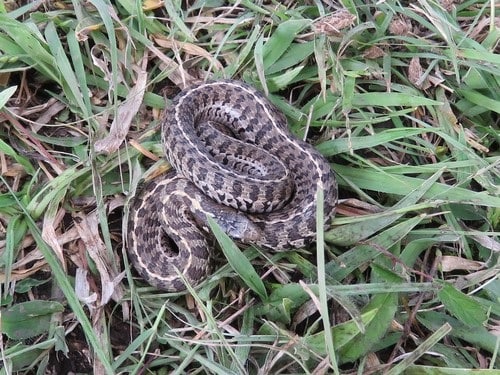
The sister species of the long-tailed alpine garter snake. This not only has a significantly shorter tail, but is estimated to be the third shortest garter snake worldwide. The record length was just 56.7cm (versus 134cm for a common garter snake), and this keeper finds that most are shorter, having bred them for years. His adult females ranged from 44.8-51.2cm, while his adult males ranged from 41.2-47.3cm.
Like the long-tailed garter snake, this species preys mostly on earthworms. It’s a citizen of the Mexican plateau, and has been found at elevations from 2160-2740 metres. Thamnophis scalager can be found in peaceful grassy valleys with cows and horses grazing, and a river flowing through the centre. They appear in the borders of forests near small streams, and love to rest under small rocks for shelter. They can appear in drier, arid grassland as well. This garter snake is particularly abundant in the countryside outskirts of Mexico City, which lies at an altitude of 2575 metres (the 9th highest capital city).
Compared to yellow-throated garter snakes, this species is easily recognisable. Its flanks contain a series of dark blotches rather than the parallel vertical stripes of most species, including US staples like the common garter snake. However, their spine still has a vivid stripe, and this varies from white to neon orange.
| 10 | Bogert’s garter snake |
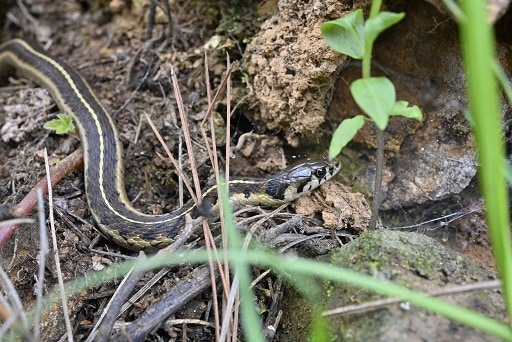
This garter snake lives exclusively in the Oaxaca region of southern Mexico. It became an official species in 2005, when Godman’s garter snake was reanalysed, and declared to truly be 4 seperate species. Bogert’s garter snake is recognisable by subtle physical features such as a head with no patterns, a tail 25% of body length in males (23% in females), and 145 ventral (belly) scales in males, with 140 in females. There were also two rows of round dots on each flank, between the spinal stripe and the lower stripe.
Bogert’s garter snakes live in oak woodland and pine-oak forests, and nothing is known of their diet or defensive techniques. However, they’re perfectly harmless to pick up, and will normally curl harmlessly around a finger.
This garter snake has wide variety in the wild. In some snakes, the spinal stripe is bright, while in others the stripe is dim. The same is true for the dots, which sometimes blend into a darker background.
